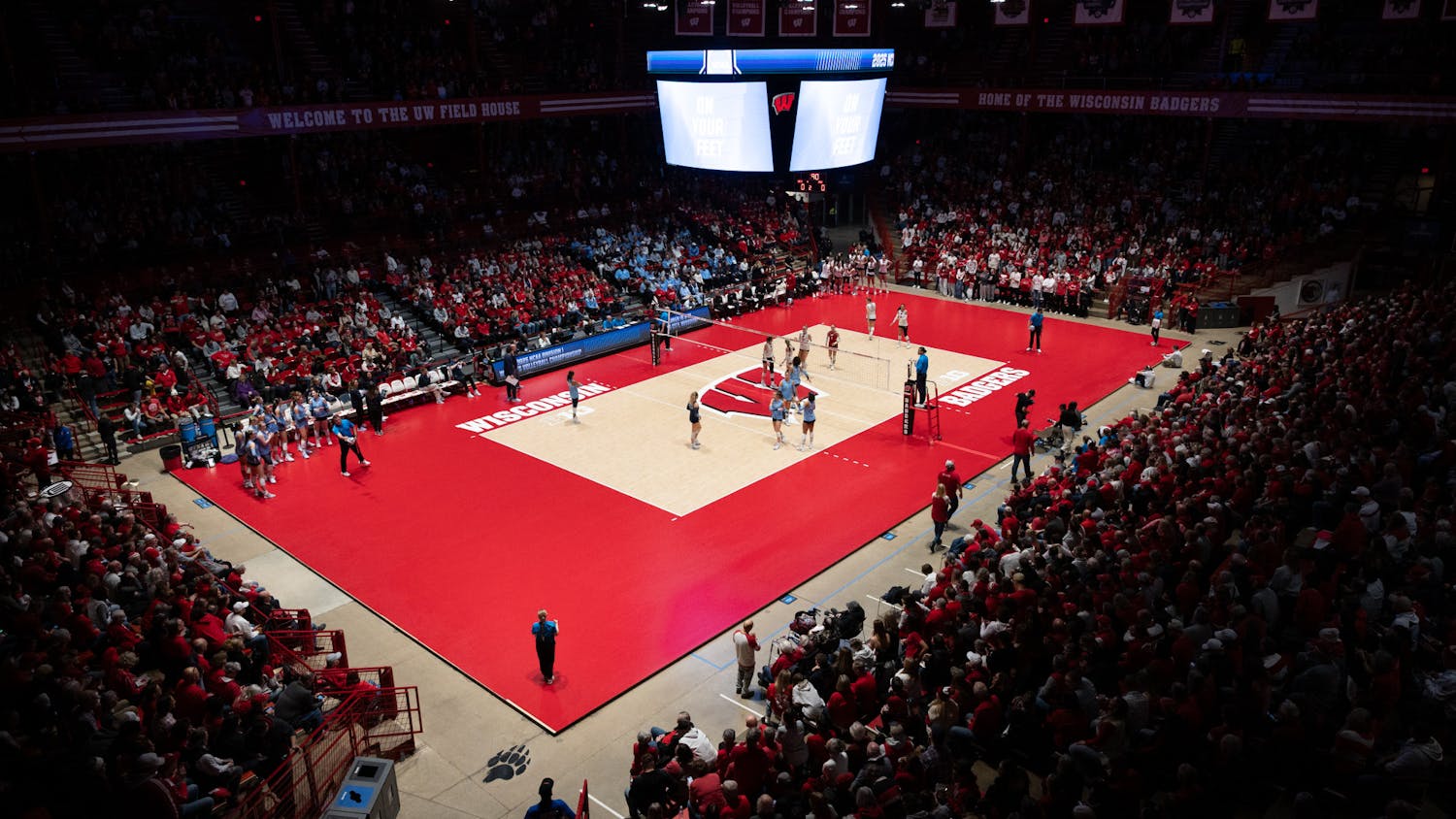The No. 16 Wisconsin men’s swimming and diving team starts national championship action Wednesday night at the Georgia Institute of Technology in Atlanta, Ga. There is a good chance for the Badgers to come out with at least one, if not more, All-Americans, even though they are only sending eight swimmers to the meet, because there are multiple top-16 seed times.
Many Badger fans may be a little confused as to how NCAAs work for swimming, so here’s a bit of a primer: Swimmers qualify themselves at various meets throughout the season based on a two-tiered time standard set by USA Swimming and the NCAA. Based on numbers and how many individuals and relays auto-qualified in the first tier, a selection committee will then decide how many swimmers and relays in the second tier will qualify and get to swim at NCAAs. Once they get there, swimmers score points if they place in the top 16 of their particular event.
This year, there are 12 individual events UW men are swimming in. Seeing as many of the discrepancies between qualifying and top times are extremely close, it’s really anyone’s ball game if they’re having a really good day in some of the shorter races.
The Badgers have also qualified in three relays—the 400 and 800 freestyle relays, as well as the 400 medley relay.
Now you’re pretty primed as to how NCAAs work, here are a few frequently asked questions about watching swimming:
Will this meet qualify swimmers for the Olympic Trials?
No. This meet is held in a short course (yards) pool, which is completely different than a long course (meters) pool, which is the type of pool that needs to be swum in to qualify for Trials. Swimmers can, however, break American (or other national) as well as world records at this meet—it’s very likely that Caeleb Dressel of Florida, the current world record holder, will reset multiple world records this week, and records from various other countries will be broken—UW’s Matt Hutchins has a chance to break New Zealand’s short course yards mile record.
How do relays work?
In the freestyle relays, every swimmer does the front crawl—in the case of the 400 relay, there are four swimmers doing 100 yards, and in the 800 relay there are four swimmers doing 200 yards. The distances are the same in the medley relays, but the format is a bit different; each swimmer will swim their leg of the relay in a different stroke. The first swimmer will do butterfly, the second backstroke, the third breaststroke and the fourth freestyle (which usually means front crawl).
What’s a typical amount of time for someone to drop from their seed time?
It depends on the race. If it’s the 50 freestyle, hundredths of a second to a tenth of a second is probably reasonable. If it’s a 100 event, three-tenths to a second is reasonable, and if it’s a 200 event, half a second to three seconds. If it’s a distance event, people can drop 15-30 seconds by just shaving half a second off each lap.
Why is there a video review happening?
All NCAA competition pools are equipped with an electronic timing system that will verify the time it took from when the swimmer entered the water to when he or she reached the wall, as well as people with stopwatches outside the pool. In order to finish a race, the swimmer must touch the wall so the time is verified. If there is a dispute over who touched the wall first, if there was a problem with a relay, or if someone didn’t turn properly, there will be a video review and sometimes a disqualification.
One of our swimmers was signed up to swim in a certain race, but I never heard their name. Why are they not racing?
They could have scratched or DFS’ed, especially if it’s an event they are a bonus qualifier (below 30-seed) in. Sometimes swimmers want to focus their energy on the events they have a better chance of winning, so they decide to not swim their bonus events. This happened in the women’s meet last week; two women signed up for the 400 IM scratched and decided to focus on the mile. It paid off, and both of them ended up as All-Americans.
Where are the Speedos?
Since this is a championship meet, most men choose to wear tech suits. A tech suit is made with a special combination of fabrics that is compressive and repels water to some degree. The tighter the suit, the less drag it creates, so in theory, the tech suit will make you go faster in the water. The Badgers are also sponsored by a swimsuit company called A3, so their suits wouldn’t (technically) be Speedos anyway.
Who are the Badgers’ qualifiers and what are their seeds?
Matt Hutchins - 500 freestyle (9th), 200 freestyle (40th), 1650 freestyle (4th)
Brett Pinfold - 200 IM (24th), 200 freestyle (29th), 200 backstroke (34th)
Austin Byrd - 200 IM (56th), 100 backstroke (34th), 200 backstroke (25th)
Cannon Clifton - 50 freestyle (34th), 200 freestyle (36th), 100 freestyle (12th)
800 freestyle relay (12th)
400 medley relay (23rd)
400 free relay (17th)
The additional men who qualified to swim on at least one of the relays are Ryan Stack, Harrison Tran, Ryan Barsanti and Jake Mandli.
Be sure to keep up with how the Badgers are doing in the meet via Twitter. We will be live tweeting Wisconsin’s results as they come in starting Wednesday night, when the first event with a Wisconsin qualifier takes place.






